#Larus delawarensis
Explore tagged Tumblr posts
Photo

Ring-billed Gull (Larus delawarensis)
© Hannah Leabhart
77 notes
·
View notes
Text

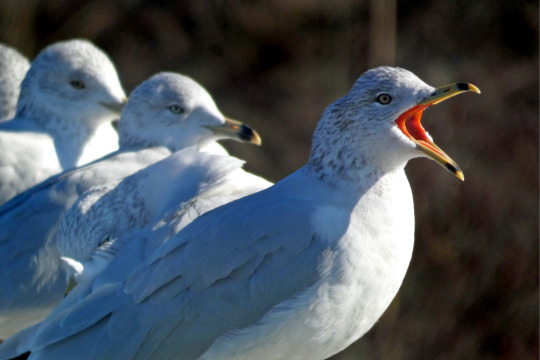
You don't have to yell about it
Ring-billed Gulls (Larus delawarensis)
December 15, 2023
John Heinz National Wildlife Refuge, Tinicum, Pennsylvania
#birds#bird#photographers on tumblr#gull#gulls#seagull#Larus delawarensis#birdblr#birb#birbs#ornithology#birblr#nature#animals#seagulls
242 notes
·
View notes
Text




The Power; The Pose; The Majesty
#ring-billed gull#i think#Larus delawarensis#ornithology#birb#the pose#powerful creature#seagull#niagara falls#niagra falls#east coast bird#photography#birdwatching#birds#bird photography#meowmeowimacat
9 notes
·
View notes
Text







The State Bird Initiative - Delaware: Archetypes
Hello! If you've been waiting for another State Bird Initiative poll, don't worry! Massachusetts is coming soon! Been busy with grad school and life things (been an...interesting fall), so my attention was pretty heavily diverted, and Massachusetts is going to be...interesting. But in the meantime, I've been thinking about something. If you'd like to know more about these characters, go ahead and check out the post after the jump!
When I was a kid (long long ago, in the forgotten age known as the '90s), I was a big fan of the magazine series Ranger Rick. If you've never heard of it, just know that it's a book published by the National Wildlife Federation for kid, teaching them about animals and the environment through fun articles, games, and comics that star the titular character, Ranger Rick, and his various animal friends. Just know that I loved the hell out of this series as a kid. And hey, for those of you youngsters that grew up without this book (even though it's still being published, apparently, alongside the nostalgia fuel that is Zoobooks), you may identify more with shows like Zoboomafoo or Wild Kratts, amongst other animal shows for kids.

As a former (and future) teacher, I'm a big fan of teaching aids for kids, especially things that get them excited and interested in a given subject. Since a huge part of the State Bird Initiative is meant to choose birds that kids and other can identify with their home state, I had the idea to make archetypal representatives for each of the nominated species. Kind of like mascots. I'm calling them Archetypes in this post, but I'll probably come up with a better name for these guys. And yes, I'll be making some more of these in the future, ideally for every state, with some characters returning for multiple posts.
Each of the above birds are highlighted in the polls for the Initiative, and each is given a name based somehow on their species. Those descriptions are beneath the pictures themselves. Remember, these are meant to archetypal characters for kids to identify with, Ranger Rick-style, meaning that their characters are somewhat simple for kids to latch on and gets attached to. Call this an educational concept, were the State Bird Initiative actually to be official. This is just the first of these posts, so it's a bit rough and descriptive. So, with that, any feedback is welcomed for these five colorful characters!
#birds#bird#state bird#state bird initiative#state birds#my art#digital art#procreate#character design#birdblr#birding#bird art#delaware#artists on tumblr#delaware blue hen#domestic chicken#gallus gallus#american kestrel#falco sparverius#great blue heron#ardea herodias#red knot#calidris canutus#ring-billed gull#larus delawarensis#ranger rick
4 notes
·
View notes
Text




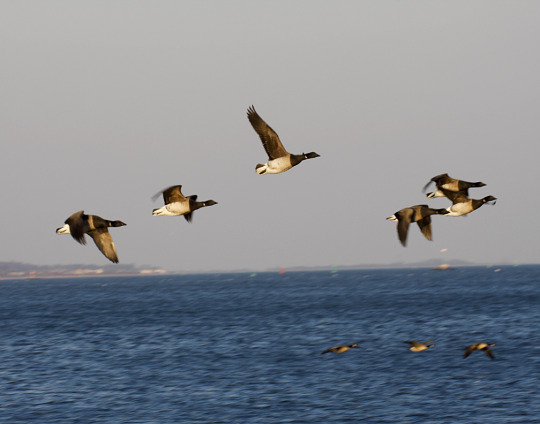
Sayreville to South Amboy
#ring billed gull#larus delawarensis#sanderling#brant#calidris alba#branta bernicla#middlesex county#new jersey#february#south amboy#sayreville#birds#raritan bay#bird watching#outdoors#hike#ken buchanan riverfront park#raritan bay county park#power plant#raritan bay waterfront park
11 notes
·
View notes
Text
If anything, homosexual females may be more hormonally "feminine" than heterosexual females: some lesbian Ring-billed Gulls actually have significantly higher levels of progesterone, a female hormone associated with nest-building and incubation behavior.
"Biological Exuberance: Animal Homosexuality and Natural Diversity" - Bruce Bagemihl
#book quote#biological exuberance#bruce bagemihl#nonfiction#homosexual#lesbian#hormones#feminine#ring billed gull#larus delawarensis#birds#gull#progesterone#nest building#incubation#animal behavior
2 notes
·
View notes
Text
There is an equally wide variation in the proportion of heterosexual, bisexual, and homosexual orientations among Ring-billed Gulls.
"Biological Exuberance: Animal Homosexuality and Natural Diversity" - Bruce Bagemihl
#book quote#biological exuberance#bruce bagemihl#nonfiction#variation#heterosexual#bisexual#homosexual#ring billed gull#larus delawarensis
0 notes
Text
Common Gulls are fairly sociable, often associating in flocks of up to 100 individuals; sometimes tens of thousands of birds congregate outside of the breeding season. Ring-billed Gulls are also gregarious.

"Biological Exuberance: Animal Homosexuality and Natural Diversity" - Bruce Bagemihl
#book quotes#biological exuberance#bruce bagemihl#nonfiction#ring billed gull#larus delawarensis#common gull#mew gull#larus canus#sociable#gregarious#breeding season
0 notes
Text

MINE
(Larus delawarensis, 12/26/2024)
170 notes
·
View notes
Note
I've been getting into (gray) catbirds and ring-billed and herring gulls lately. Neat little guys I think need more appreciation
Ok, booboo, here you go...

Gray Catbird (Dumetella carolinensis), HE SCREMMM!!!, family Mimidae, order Passeriformes, MA, USA
Named after its mewing cat-like call.
This bird is a mimic thrush, along with the mockingbirds and thrashers, and can mimic the calls of other birds.
photograph by Richard Alvarnaz
youtube
And now, some gull friends...

Ring-billed Gull (Larus delawarensis), family Laridae, order Charadriiformes, Red Hook, Brooklyn, NYC, NY, USA
photograph by Rhododendrites

American Herring Gull (Larus smithsonianus), family Laridae, order Charadriiformes, Lincoln, ME, USA
photograph by Jeremiah Trimble
147 notes
·
View notes
Text


[ID: Two photos of immature ring-billed gulls standing on blacktop. End ID]
Ring-billed gull (larus delawarensis)
September 17th, 2024
Moosehead Lake, Minnesota
#birds#gulls#seagulls#ring billed gull#photography#wildlife photography#animals#moosehead lake#minnesota#my photos
26 notes
·
View notes
Text

Heermann's Gull and Ring-billed Gull Larus heermanni and Larus delawarensis
1/21/2023 Orange County, California
#the shape of the RBGU's bill..... :V#ring-billed gull#heermann's gull#gull#gulls#seagull#seagulls#bird#birds#wildlife#bird photography#nature#birding#birdwatching#wildlife photography#my photos
50 notes
·
View notes
Text







Migration! Ring-billed Gull (Larus delawarensis) I noticed in the colder months the town I live in gets lots of activity from seabirds, particularly around rivers where they catch fish, and allow for some great photo opportunities. I haven't gotten a great one yet, though haha! They're stopping for a meal as they head down south for the rest of the year until breeding season comes around again for them next summer. I did manage to get out and take some more decent photos though besides just Gulls so I'll be posting those in the downtime of the winter when I likely can't take the camera out for long periods if at all.
9 notes
·
View notes
Text



Ring-billed Gull (Larus delawarensis)
Woodquay, Galway City, Co. Galway - 01-01-2025
I believe both birds here were ring-bills but I couldn't 100% confirm the second one
6 notes
·
View notes
Text
The State Birds Initiative: Delaware (#1)

Welcome to the first official poll of the State Birds Initiative! Now, before the poll, one thing real quick. My suggestion is that you read the post below before voting in the poll below. That's especially important if you're lacking any context about the birds being presented as the new (or old) State Bird of the First State, Delaware. This is to be fully informed as to why these are being presented, and to make your choices appropriately. Lastly, some of these birds, you will notice, go against some of the rules listed in the introduction post. All is explained after the jump where the explanations are, I promise you that. But with that...OK! Here's the poll!
More details after the jump!
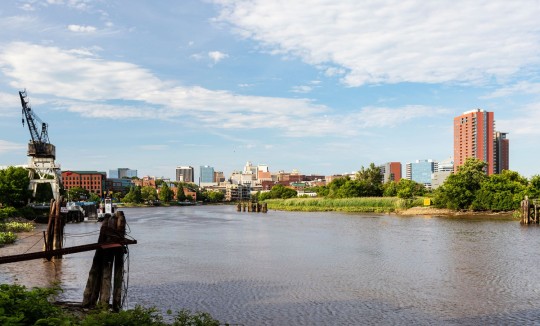
Welcome to Delaware, the First State!
Admitted into the Union in 1787 as the first state of this country, Delaware is the nation's second smallest, giving it the additional nickname "the Small Wonder"! Its capital is Dover, its most populous city if Wilmington (pictured above), and it's best known for its proximity to the Delaware River and the Delaware Bay, which it's actually named after. This does mean that Delaware Bay, for various reasons, will be one of the most important features of this post, since the wildlife that gathers around it is pretty ubiquitous in the state.
But OK, enough grade-school reporting of basic state statistics. What's Joe Biden's home state actually like, from the view of the citizens? On reddit, a user named hajisaurus said that Delaware is like a small town, but as an entire state. Compact, but eventful and familiar. Another user, raycooke, referred to it as the US condensed into miniature, with business in the north, beaches in the south and east, and farms in the middle. But the general vibe, it seems, is "familiar". Not overly friendly, but definitely close enough to be familiar. Also...the Bobbie.

God, that's a good looking sandwich. Invented in Delaware? Hell yeah. Anyway, off of turkey and onto birds. Personally, what all this says to me is that the chosen State Bird should be an easy-to-find sight, found throughout most of the state, and familiar to Delawareans in general. Something common but uniquely Delawarean would be great. In terms of habitat, water-bound seems appropriate, especially looking at beaches and estuaries. Again, the entire eastern border of the state touches the Delaware River or Bay, meaning water is somewhat important to the state (as is seafood).
Now, those Delawareans amongst us may have different opinions of what makes Delaware Delaware, and what represents its people most accurately. Which...yeah, I'm not from there, and I've only been there twice, and that's because I drove through it. Maybe went to one rest stop near Dover. And for the record, SOLID-ass rest stops in Delaware along the highway, just saying. Great job there, Delaware. But, yeah, PLEASE tell me if there's something else to take into account. And that goes for ALL of the states in this series, by the way. I can't claim to be an expert in any way here, so please call me on my bullshit if you feel that you have to. But, with that said, let's talk about what I do know: birds.
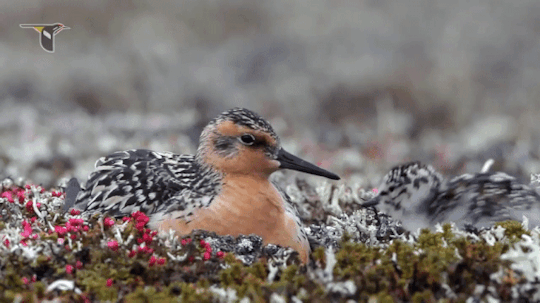
Red Knot (Calidris canutus)
For many of you, especially the bird-inclined amongst us, this was always going to be the obvious answer to this question. The Red Knot is an iconic Delaware bird for birdwatchers, as they're attracted to the state in MASSIVE numbers during migratory seasons. It's one of the most important and famous migrations in the country, and the flocks of Red Knots and other shorebirds are the main attraction. Why? Easy answer: the Atlantic Horseshoe Crab (Limulus polyphemus).
Delaware Bay is the site of the horseshoe crab's largest migration in the USA. This isn't the only place in the country they're found, but it's DEFINITELY the largest population of the species by a SIGHT. And speaking of iconic species, the horseshoe crab certainly fits the bill as a charismatic species of conservation concern. Which is why it may be curious that I'm highlighting the Red Knot, since they, y'know...EAT horseshoe crab eggs, alongside other birds in the great Atlantic seaboard migration. But that's actually why horseshoe crabs are so important.

Red Knots, amongst other shorebirds, depend on the horsehoe crabs for food, as these stopovers in Delaware Bay allow them to continue with their journey. Without the horseshoe crabs of Delaware, their life wouldn't be possible, and certainly not in the massive numbers found during migration. Understand, this is a threatened species, especially in the United States, that gathers in Delaware Bay in the thousands, with 2022 numbers being about 39,800 in a population. That's HUGE. The Red Knot is a symbol of this ecological boom, and both species should be celebrated. That's the reason the Red Knot is often given as the answer to this question of State Bird of Delaware, including by the Lab of Ornithology's article posted last year. Plus, it's got an iconic appearance, it's easy to find, and it tells a great story (which also includes a migratory distance of ~9,000 miles, which is crazy). Perfect, right?
...It doesn't breed in Delaware. It actually doesn't even breed in the United States. No, the Red Knot breeds in Nunavut and Greenland, above the limits of the Arctic Circle. I meant it when I said the Red Knot used Delaware as a stopover site. As such, it's an event when they arrive in Delaware twice a year...but they do leave. Pretty quickly, even. So, sure, the Red Knot is a great candidate for a number of reasons, but...is it OK if it doesn't actually breed in the state? I'd argue for it, since Delaware is is highest abundance of the species during migration in the country, and it's iconic in that way in particular. But I'll leave that as a question for you all to decide.
Let's go on to the next one, shall we?
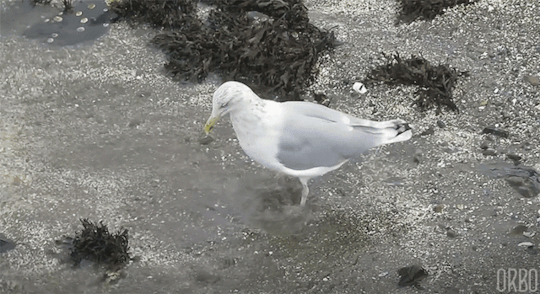
Ring-billed Gull (Larus delawarensis)
OK, this one might be cheating a bit, since the bird in question is found basically...well, everywhere. It's definitely not native to Delaware alone, and doesn't even breed there. So why even include this bird in the running? Easy answer: it's in the name. It's the only bird species in the world with the state of Delaware in its scientific name. However, this is also cheating, since the name actually refers to the Delaware River, not the state itself. That's because the bird was first described and discovered along the river, which flows from New York, through New Jersey and Pennsylvania, until ending in Delaware and the Delaware Bay. And yeah...technically that was in New Jersey. BUT STILL! Only bird with Delaware in the name, just sayin'. And after all, if the Red Knot can be considered despite not breeding in the state, then...what about the Ring-billed Gull? Or...maybe I'll save this one for New Jersey.
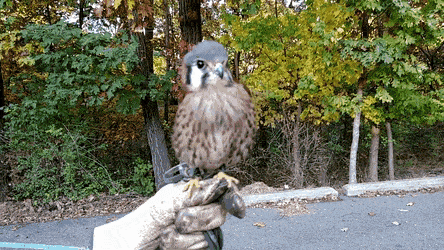
American Kestrel (Falco sparverius)
OK, this one I'm actually a bit enthusiastic about, partially because I love raptors, and I especially love this raptor. The American Kestrel is a small falcon, and is in fact the smallest falcon (and raptor) in North America. About the size of a mourning dove, they're pint-sized predators, specializing on insects, rodents, lizards, and the occasional sparrow or songbird. They're also versatile, living all over the USA in various habitats. And that, of course, includes Delaware. This is a breeding species in the state, so it already has that above the other two previously discussed! And to top it all off...it's literally a small wonder. Come on, man! This is perfect! A scrappy falcon that's literally red, white, and grayish-blue!
But, OK, if it's common all over, why specifically Delaware? Because it's actually threatened in Delaware, fun fact. This is prominent enough to have inspired the Brandywine Zoo to work with the American Kestrel Partnership (part of The Peregrine Fund, who we'll discuss again on another day or five), and start the Delaware Kestrel Partnership, which monitors kestrel populations in the state. The species' population has decreased by 88% in Delaware and surrounding states in the last 50 years, which is...dramatic. It's a species that desperately needs saving and attention, and work in Delaware can be applied in the kestrel's entire range. Look, I beg you to check this out, because it's a fascinating set of projects. And honestly, this alone would have me include the American Kestrel on this list. Plus...that would also make this the first raptor to become a state bird.
Yeah. Take a look. NO raptors amongst the State Birds. Insane.

Great Blue Heron (Ardea herodias)
Now, this one seems out of nowhere, but hear me out. For whatever reason, the Great Blue Heron (Ardea herodias) seems to be completely ignored as a state bird across the entire country, despite it being one of the MOST iconic birds in the United States. I mean, come on, almost all of us have seen a GBH at some point in our lives, especially if we live near water. But why suggest it for Delaware specifically, then? Well, the herons breed in Delaware, so that's checked off. They're found in the state year-round, making them easy to access and identify with. They're definitely iconic in appearance. They highlight the marshlands and wetlands of Delaware as an important ecosystem of concern. And...uh...
Look, I'll be straight with you. "Blue Heron" is the closest I could get to...another set of words associated with Delaware and birds. Because honestly, it's genuinely somewhat difficult to separate Delaware from those two words, and this would be a fairly minor change that would allow the use of that term with little fuss! And honestly, the Great Blue Heron isn't the worst choice in the world for Delaware, even if it admittedly barely breeds in the state compared to others. And...like...oh, goddammit, fine, let's get this over with.
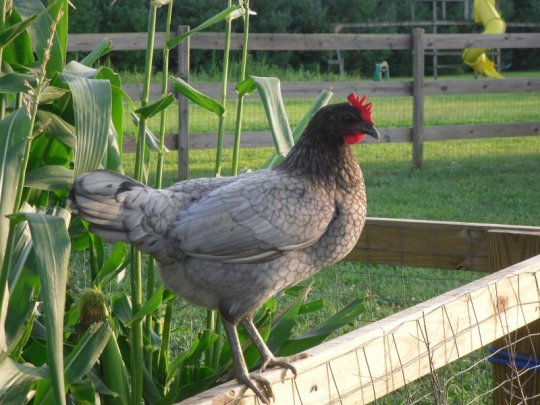
Delaware Blue Hen (Gallus domesticus)
Delaware. Look at me. Why...in the blue HELL...did you choose a goddamn chicken as your state bird? I mean, for God's sake, it's not a wild bird, and even if it is a breed developed in the state, IT IS A CHICKEN! What possible reason could there be to choose this bird over all the other possible birds? And look, I like chickens as much as the next guy. Used to raise and keep them as a kid, so I do love them, but this just feels wrong. But OK, let's make the argument for them by looking at Delaware's original argument.
So, from basic cursory research, the Delaware Blue Hen dates back to the Revolutionary War. Apparently, one of the regiments of the American army raised fighting game chickens that were so well-known, the regiment itself became known as the "Blue Hens". It's also possible that the leader of this regiment, Jonathan Caldwell, had a special blue hen that had blue offspring, and the men in the regiment also took to calling themselves "Sons of the Blue Hen." Which means...shit. That means the Blue Hen actually has cultural relevancy specific to the state of Delaware. Damn, that's actually a good argument for their assignment. But with that said...there actually is a problem here.
The Delaware Blue Hen doesn't technically exist.
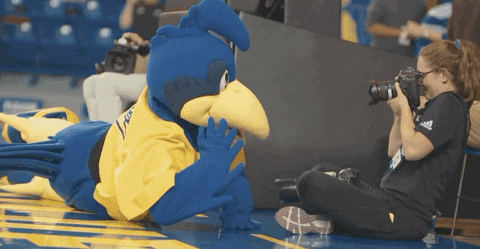
Yeah, this isn't actually a recognized breed of chicken, despite the INSANE amount of devotion Delawareans have for it. I mean, military regiments, sports teams, even the unofficial nickname for the state is named after the Blue Hen, and it's technically not a real chicken breed. Instead, they're actually American Game hens that are crossed with Andalusian Blue hens to get that iconic coloration, but they're not actually an isolated breed.
So...what does this mean? Because this is genuinely a problem, right? Delaware's state bird doesn't actually exist, AND it's a chicken. Well...I have a proposition for you, Delaware. Because I do recognize the fact that the Blue Hen seems to mean a lot to you, both now and historically. So, if that's the case, we need to recontextualize this guy in a couple of ways. So, here's my proposition...
Make the Delaware Blue Hen the State Game Bird.

Haven't brought this up yet, but some states have what's called a "state game bird" alongside the actual state bird. Game birds, by the classical and nonscientific definition, are members of the Galliformes and Anseriformes that are associated with hunting and food. And technically...the chicken counts. Yeah, Delaware easily could ratify the Delaware Blue Hen into service as the State Game Bird, which makes even more sense when you consider its role AS A SPORTS MASCOT! See what I mean? But that's not the end of it.
You'll also have to find some way to get the hen recognized as an independent breed. I have NO idea what the process is for that (I guess this is the pathway to do it?), but it's probably gonna take a bunch of breeders and number of years to turn this into a defined breed. Hell, as it stands, not every chicken hatched to a Blue Hen is even blue. So, hey, get on it, Delawarean chicken breeders! Make you state proud!
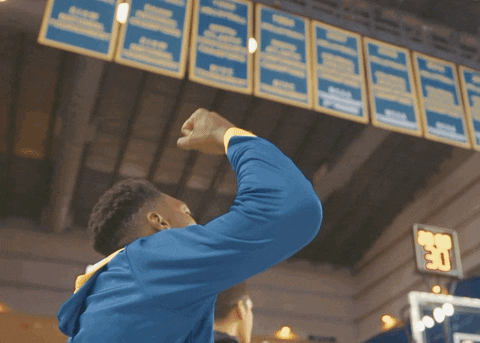
And that's the information on the candidates for the Delaware State Bird! Will the Delaware maintain its place? Will the Red Knot take it, despite the controversy surrounding the choice? Will my bullshit proposal for the Great Blue Heron actually resonate with some people? Up to Tumblr!
As for the next state, it's time to hop next door to Pennsylvania, and to a State Bird that also technically doesn't exist...for a somewhat different reason. And yes, for the record, I know the below GIF is technically the wrong species, BUT MY CHOICES IN GIFS ARE FEW

See you soon, and happy birding!
Introduction to the State Birds Initiative
1. Delaware - Poll | Results 2. Pennsylvania - Poll | Results 3. New Jersey - Poll | Results 4. Georgia - Poll | Results 5. Connecticut - Poll | Results 6. Massachusetts - Poll | Results
#bird#birds#birdblr#birding tumblr#bird tumblr#birders#birder#birding#black birder#birdwatching#birdwatchers#birdwatcher#state bird#state bird initiative#state birds initiative#state birds#poll#bird poll#tumblr poll#delaware#delaware blue hen#gallus domesticus#chicken#red knot#calidris#american kestrel#kestrel#falco sparverius#ring billed gull#gull
69 notes
·
View notes
Text


29/10/2024
Ring billed g.ull (Larus delawarensis)
9 notes
·
View notes